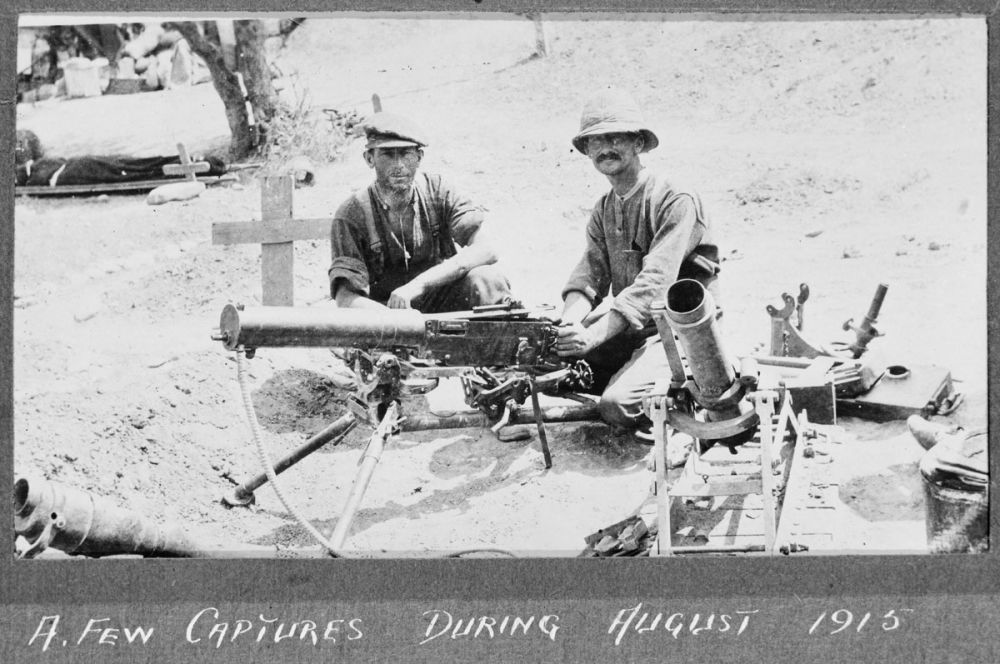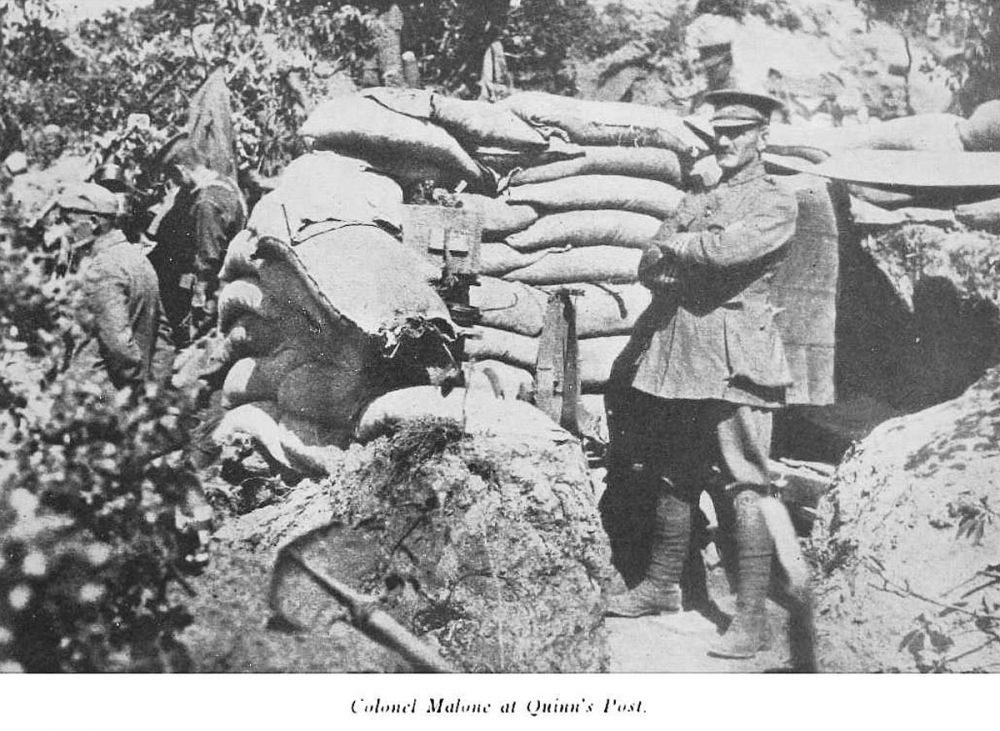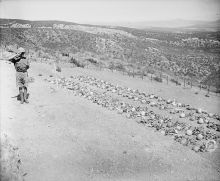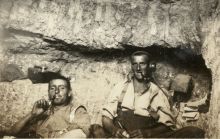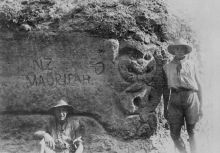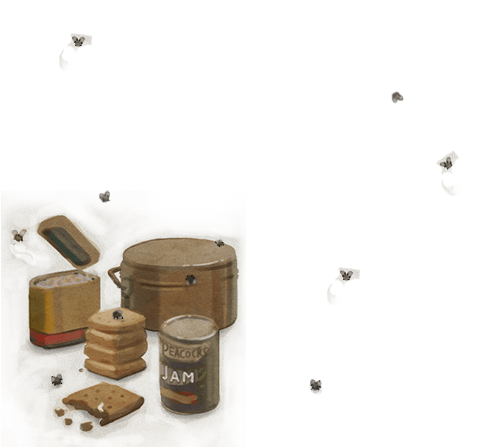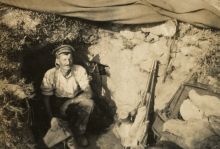Crest
You are just below the crest of Chunuk Bair. If you look back down the track behind you, you can see the Apex where you have walked from.
At 4.30 in the morning on 8 August 1915, Lieutenant-Colonel William Malone’s Wellington Infantry Battalion lined up at the Apex in a solid mass eight across, and headed for the summit. You can imagine a tightly packed group of 800 men no wider than this track, marching up here with their bayonets fixed. They waited for the artillery fire on the top of the hill to stop, then they attacked. However, the summit was all but deserted.
Half the Wellington Infantry Battalion occupied the Ottoman trench up on the summit. The other half started to dig a reserve trench from where you’re standing, across the track, up to the Turkish memorial that you can see through the trees on your right.
On the top, the Wellingtons almost immediately came under intense Turkish fire.
If you want to you can pause the audio guide and walk up to the end of this track at the summit.
Where you now stand, on the summit of Chunuk Bair, was a shallow Turkish trench. Imagine being one of the Wellingtons here, after all the months of fierce fighting. For the first time, they could see their goal of the Narrows of the Dardanelles. If they could hold this high ground it would be an epic victory.
By the time the Wellingtons reached here, day was dawning. As they started to dig in on the hard stony ground, they were reinforced by two British battalions, which came under heavy fire as they moved up. Jimmy Swan, one of Malone’s scouts, said, ‘The British are coming and the artillery is bowling them over like bees.’
The British reinforced the left and the right, but broke and ran when the Turks counterattacked. This battle was largely fought by the Wellington Infantry Battalion.
By 8 o’clock in the morning on 8 August, Turkish counterattacks, on the trench where you now stand, had wiped out half of the Wellington Infantry Battalion. But the New Zealanders in the support trenches behind hung on.
The battle for the crest occured right here. It was fierce hand-to-hand fighting with rifle and bayonet. These attacks and counter-attacks continued throughout the day and this crest became no-man’s-land.
Malone, 57 years old, led the attacks. He was proud that an enemy bullet had bent his bayonet. He looked on it as a lucky charm. Late in the afternoon, the Wellington Infantry Battalion who are 800-strong that morning, were reinforced by 186 Troopers of the Auckland Mounted Rifles, who dribbled in under fierce Turkish fire. By the end of the day there were only 50-odd Wellingtons still able to fight.
On the slopes behind you, hundreds of wounded New Zealanders and British gathered without medical support, unable to crawl back down the ridge. Some people, like Charlie Clark and Harvey Johns, crawled down the hill and survived, but it took between six and eight hours to get a man down to the beach on a stretcher, and most of the wounded couldn’t move and died here on these slopes in the hot sun.
At 5 pm Malone was killed near the summit of Chunuk Bair, by New Zealand artillery fire. That night, the Wellington Infantry Battalion was replaced by the Wellington Mounted Rifles and the Otago Infantry Battalion. The next day, the battle was repeated with attack and counterattack, but the New Zealanders still held this ground.
During the night the New Zealanders were relieved by two British battalions, who were wiped out on the morning of 10 August by a counterattack led by Mustafa Kemal, later known as Atatürk. The summit of Chunuk Bair was lost.
If there’s an epic New Zealand story, it is the battle that took place right here on Chunuk Bair on 8 and 9 August, 1915.


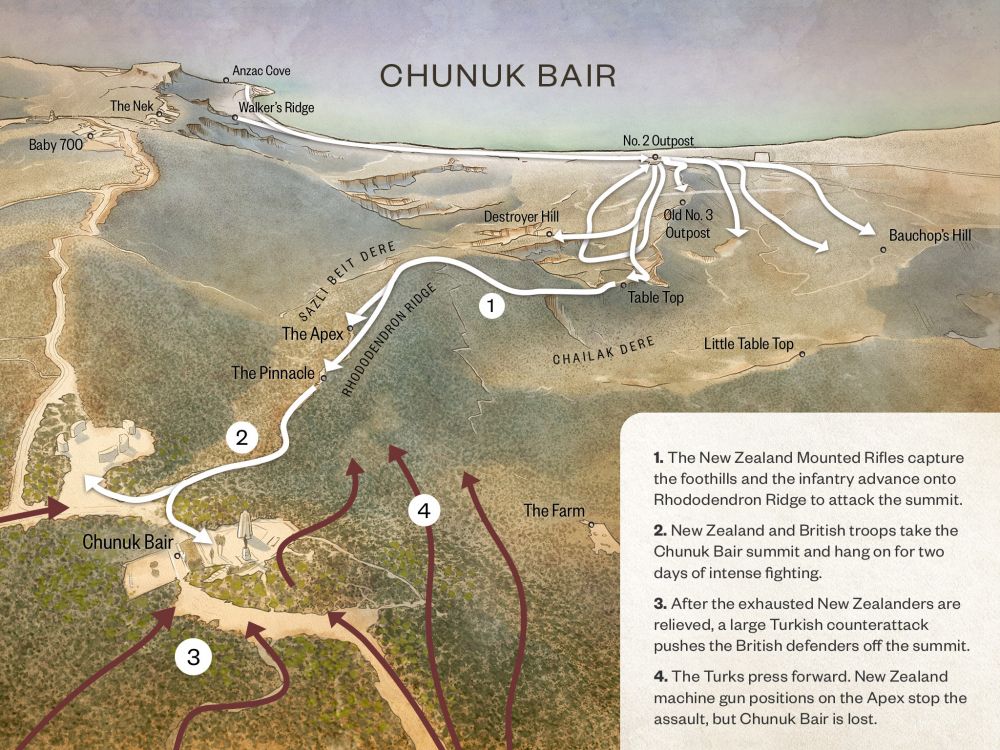
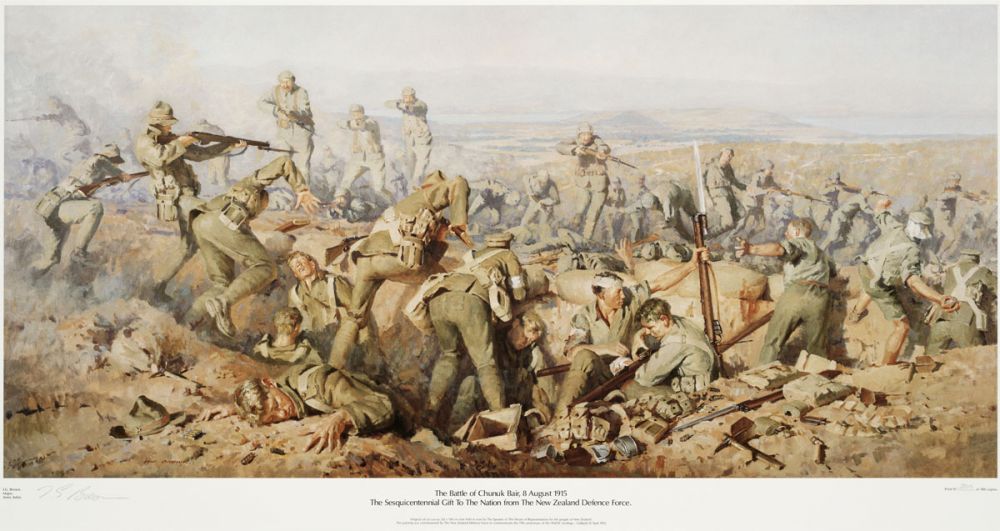
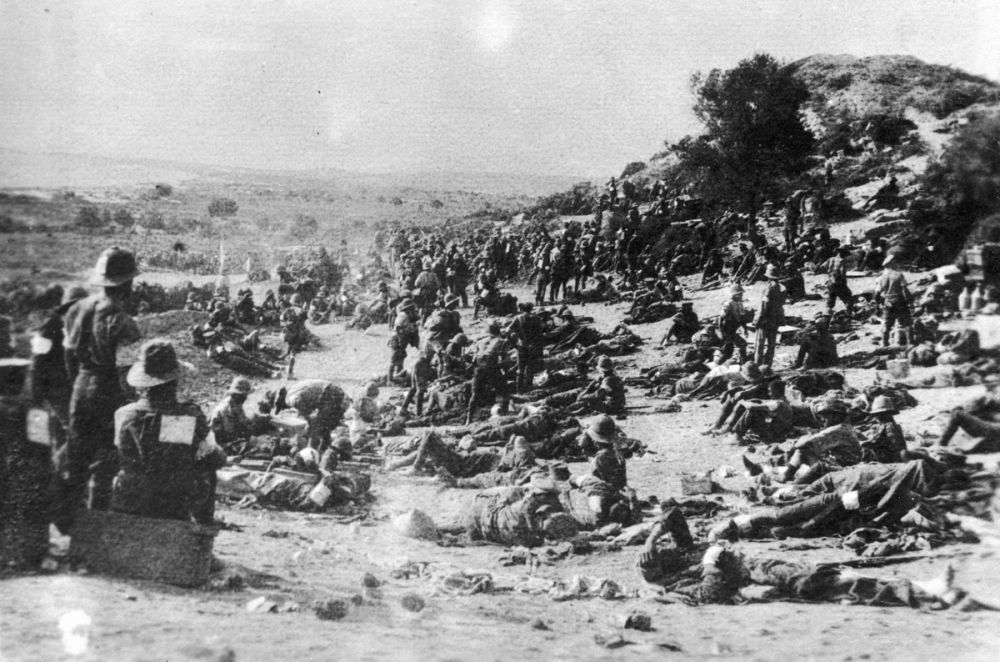
 1914 - 1919.jpg?itok=p1suMDAA)
